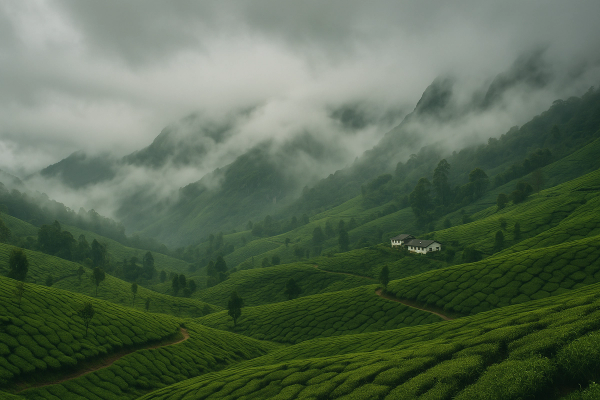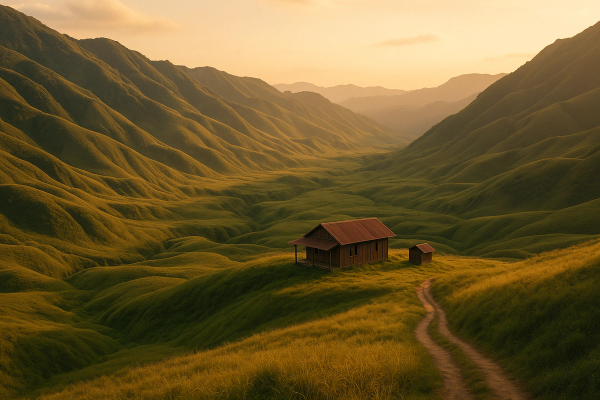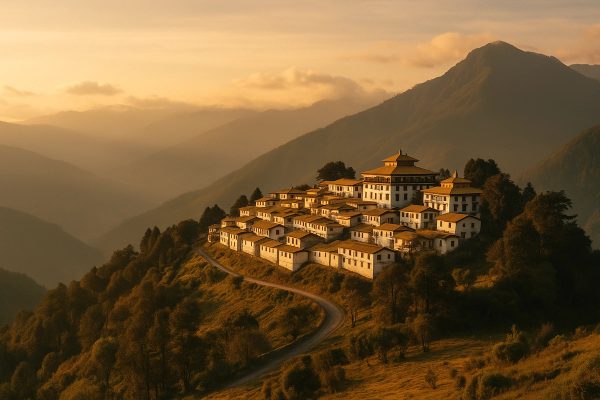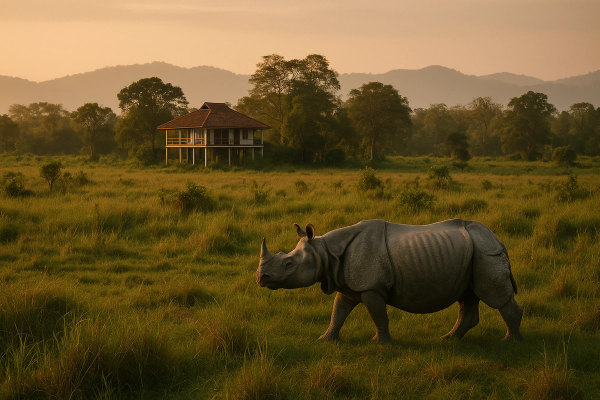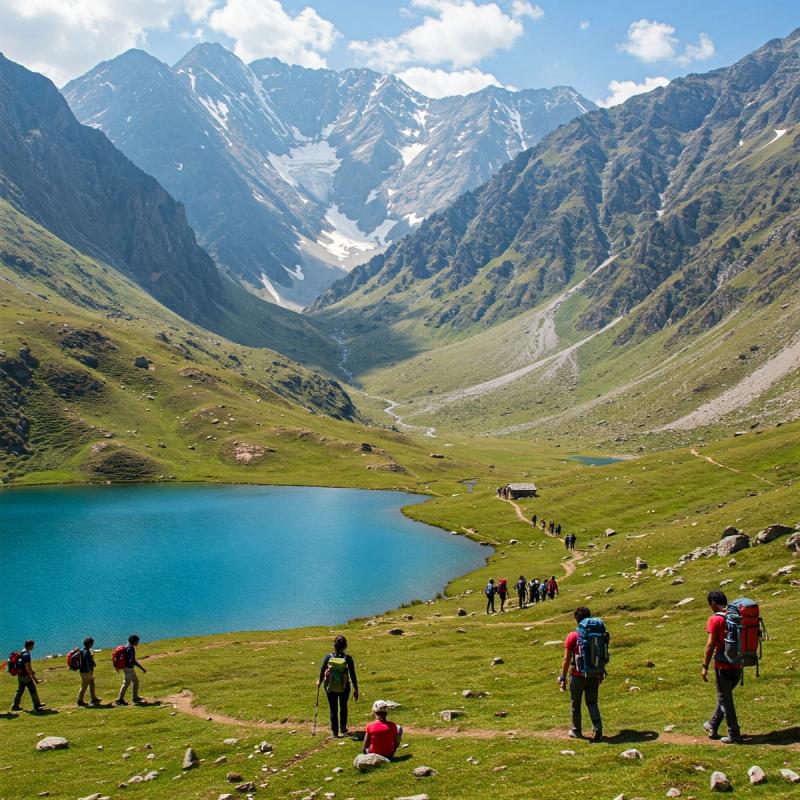
Kashmir Great Lakes Trek: An Epic Challenge for the Experienced Soul#
Imagine stepping into a painting where turquoise lakes shimmer under dramatic Himalayan peaks, vast meadows explode with wildflowers, and the air is so crisp it bites. Now, imagine earning those views through challenging ascents, remote trails, and the sheer thrill of high-altitude adventure. Welcome to the Kashmir Great Lakes Trek (KGL), a jewel in the crown of Indian trekking, but one that demands respect and preparation. This isn't your average weekend hike; it's a formidable journey for experienced trekkers seeking profound beauty and a true test of endurance. This Kashmir Great Lakes trek guide is crafted for those ready to embrace the challenging adventure that awaits in this corner of paradise.¶
Over 7-9 days, you'll traverse breathtaking landscapes, crossing high passes and camping beside stunning alpine lakes like Vishansar, Kishansar, Gadsar, Satsar, and the majestic Gangabal twins. It’s an adventure travel experience that pushes your limits while rewarding you with unparalleled Himalayan vistas. If you're looking for a trek that combines raw beauty with a significant physical challenge, you've found it. Let's dive into what makes the KGL trek an unforgettable, albeit demanding, expedition.¶
Why Trek the Kashmir Great Lakes? Paradise Found (and Earned)#
Kashmir, often called 'Paradise on Earth', reveals its most untouched beauty along the KGL trail. This trek isn't just about ticking off lakes; it’s about immersing yourself in a landscape that feels ancient and profoundly peaceful. The sheer scale is humbling – think expansive green valleys carpeted with vibrant flora, framed by rugged, snow-dusted mountains reflecting perfectly in glacial waters.¶
- Unmatched Scenery: Every day unfolds a new panorama. From the meadows of Nichnai to the dramatic Gadsar Pass and the final reveal of Gangabal, the visual rewards are constant and overwhelming.
- Alpine Lakes Galore: The trek is named for its stars – the sequence of high-altitude lakes, each with its unique character and colour, ranging from deep blue to emerald green.
- Sense of Remoteness: Once you leave Sonamarg, you enter a world away from roads and civilization. It's just you, your fellow trekkers, the trail, and the mountains. This isolation is a huge part of the appeal.
- Cultural Glimpses: You'll encounter local shepherds (Gujjar and Bakarwal communities) with their flocks, offering a glimpse into a traditional way of life harmonized with the high mountains.
The KGL isn't just a walk; it's an immersion. The effort required makes the stunning beauty feel truly earned, deepening the connection to this incredible landscape.
Gauging the Challenge: Is the KGL Trek Right for You?#
Let's be clear: the Kashmir Great Lakes trek is rated challenging. It's achievable for fit individuals, but requires prior high-altitude trekking experience. Understanding the specific difficulties is crucial before committing.¶
Altitude and Acclimatization: The Invisible Hurdle#
The trek reaches altitudes exceeding 13,800 feet (approx. 4,200 meters) at Gadsar Pass. Most nights are spent camping above 11,000 feet. Proper acclimatization is non-negotiable. The itinerary is designed to help, but individual responses to altitude vary. Understanding Acute Mountain Sickness (AMS) symptoms and prevention is vital.¶
Terrain: Ascents, Descents, and Everything In Between#
Expect long walking days (6-8 hours average) covering 10-15 km daily. The trail involves steep ascents and descents, crossing boulder sections, traversing moraines, and navigating potentially slippery paths, especially after rain. The climb to Gadsar Pass is particularly demanding.¶
Duration and Endurance: It's a Marathon, Not a Sprint#
Typically spanning 7-9 days (including travel/buffer days), the trek demands consistent physical effort. Cardiovascular fitness is key, as is mental resilience to handle changing weather, basic camping conditions, and the physical toll.¶
Who Should Attempt It?#
This trek is best suited for:¶
- Experienced Trekkers: Individuals with prior experience on multi-day high-altitude treks (ideally above 12,000 feet).
- Physically Fit Individuals: Regular cardiovascular exercise (running, cycling, swimming) and strength training are essential preparation.
- Mentally Prepared Adventurers: Those comfortable with basic camping, unpredictable weather, and the challenges of remote mountain environments.
My advice? Don't underestimate the KGL. It's more demanding than popular treks like Roopkund or Hampta Pass. Be honest about your fitness and experience level.
Best Season for the Kashmir Great Lakes Trek: Timing is Everything#
The window for the KGL trek is narrow, dictated by snow cover on the high passes.¶
Mid-July to Mid-September: The Sweet Spot#
This is the prime season. Why?¶
- Clear Passes: Snow typically melts enough on the passes (like Gadsar Pass) by early July, making them navigable.
- Blooming Meadows: July and August see the valleys burst into colour with wildflowers – a truly spectacular sight.
- Stable (Relatively) Weather: While mountain weather is always unpredictable, this period generally offers clearer skies and warmer temperatures compared to the fringes of the season. Afternoon showers are common, though.
- Pleasant Temperatures: Daytime temperatures can range from 15-25°C (59-77°F) in sunny conditions, dropping significantly at night, potentially near freezing at higher camps.
Weather Patterns and What to Expect#
Even in peak season, be prepared for variability. Sunny mornings can give way to cloudy afternoons with rain or even hail. Nights will be cold. Layering your clothing is essential. Early September often offers crisper air and clearer views, but colder nights.¶
Avoid planning this trek outside this window. Early July might still have too much snow, while late September brings significantly colder temperatures and increased chances of snowfall closing the passes.
Planning Your KGL Adventure: Logistics Unpacked#
Organizing the KGL trek requires careful planning, especially regarding permits and guides.¶
Getting to the Trailhead (Sonamarg)#
The trek typically starts from near Sonamarg.¶
- Fly to Srinagar (SXR): Sheikh ul-Alam International Airport in Srinagar is the nearest airport, well-connected to major Indian cities like Delhi, Mumbai, and Bangalore.
- Srinagar to Sonamarg: From Srinagar, Sonamarg is about an 80 km drive (approx. 3-4 hours). You can hire a taxi (around ₹2500-₹3500, subject to change and negotiation) or arrange transport through your trek operator.
Most trekkers spend a night in Srinagar for acclimatization and final preparations before heading to Sonamarg.¶
Permits and Regulations: Navigating the Paperwork#
Trekking in Kashmir requires permits due to the region's sensitivity. This process is typically handled by your registered trek operator.¶
- Permissions Needed: You'll need wildlife permits and potentially local police verification.
- Operator Responsibility: Reputable trek operators will manage the entire permit process. Ensure this is included in their service. You will need to provide copies of your ID (Passport/Visa for foreigners, Aadhar/Voter ID for Indians).
- Check Current Regulations: Rules can change. Always confirm the latest requirements with your operator or reliable sources close to your trek date.
Choosing a Guide and Operator: Your Mountain Allies#
Going with a registered, experienced local operator is highly recommended, arguably essential, for the KGL trek.¶
- Why an Operator? They handle logistics (permits, transport, food, camping gear, porters/mules), provide experienced guides familiar with the terrain and safety protocols, and manage emergency situations.
- What to Look For: Experience specifically with the KGL trek, good safety record, client testimonials, qualified guides (mountain certified ideally), clear communication, inclusion of buffer days, and responsible tourism practices.
- Recommendations: Popular and well-regarded operators include Indiahikes, Trek The Himalayas, Bikat Adventures, Thrillophilia, and numerous excellent local Kashmiri operators (research and verify credentials thoroughly). Prices vary, typically ranging from ₹15,000 to ₹25,000+ per person (ex-Srinagar), depending on inclusions and group size.
Don't choose based solely on price. Your safety and the quality of your experience depend heavily on the operator's competence. Ask detailed questions about their safety measures and guide experience.
The Kashmir Great Lakes Trek Itinerary: A Day-by-Day Breakdown#
Here’s a typical 8-day itinerary for this challenging adventure. Note that variations exist, and buffer days are highly recommended.¶
Day 1: Arrival in Srinagar & Transfer to Sonamarg (Approx. 2,700m / 8,850ft)#
- Arrive at Srinagar airport (SXR).
- Meet your operator representative.
- Drive to Sonamarg (3-4 hours). The 'Meadow of Gold' offers stunning views.
- Check into your guesthouse/campsite. Briefing and acclimatization.
Day 2: Sonamarg to Nichnai via Shekdur (Trek: ~11 km / 6-7 hours | Approx. 3,500m / 11,500ft)#
- Short drive to the trek starting point.
- Begin the trek, initially through forests, then ascending into meadows.
- Pass through the beautiful Shekdur meadows.
- Steady climb to Nichnai campsite, located in a wide valley.
Day 3: Nichnai to Vishansar Lake (Trek: ~12 km / 6-7 hours | Approx. 3,650m / 12,000ft)#
- Ascend towards the Nichnai Pass (approx. 4,100m / 13,500ft). Views open up dramatically.
- Descend from the pass into colourful meadows.
- Reach the stunning Vishansar Lake, camping nearby.
Day 4: Vishansar & Kishansar Lakes Exploration & Acclimatization (Approx. 3,700m / 12,100ft)#
- A crucial acclimatization day.
- Short hike to the adjacent Kishansar Lake, nestled at the base of a peak.
- Explore the surroundings, relax, and let your body adjust to the altitude.
Day 5: Crossing the Gadsar Pass to Gadsar Lake (Trek: ~10 km / 6-8 hours | Approx. 3,600m / 11,800ft via 4,200m / 13,800ft pass)#
- The most challenging day for many.
- Steep ascent from Kishansar to the Gadsar Pass (highest point of the trek). Panoramic views are the reward.
- Steep descent from the pass.
- Reach the beautiful, isolated Gadsar Lake. Camp near the lake or slightly further down.
Mental Note: Gadsar Pass is often considered the crux. Pace yourself, stay hydrated, and enjoy the feeling of accomplishment at the top!
Day 6: Gadsar to Satsar Lakes (Trek: ~12 km / 5-6 hours | Approx. 3,600m / 11,800ft)#
- Relatively easier day, traversing meadows.
- Pass an army checkpoint (permits and IDs checked).
- Reach Satsar, a collection of seven small lakes (some may be dry depending on the season). Camp near one of the larger lakes.
Day 7: Satsar to Gangabal Twin Lakes via Zaj Pass (Trek: ~9 km / 6-7 hours | Approx. 3,570m / 11,700ft via 3,950m / 13,000ft pass)#
- Ascend again, this time towards Zaj Pass.
- Navigate boulder-strewn terrain.
- From the pass, get the first breathtaking view of the twin lakes: Gangabal and Nundkol, nestled below Mount Harmukh.
- Descend steeply to the Gangabal campsite.
Day 8: Gangabal to Naranag & Drive to Srinagar (Trek: ~11 km / 5-6 hours | Descend to 2,270m / 7,450ft)#
- Enjoy the morning by the lakes.
- Begin the long, steep descent through pine forests towards Naranag village.
- The descent can be hard on the knees; trekking poles are highly recommended.
- Reach Naranag, visit the ancient temple ruins.
- Board vehicles for the drive back to Srinagar (approx. 2-3 hours). Check into a hotel/houseboat.
Day 9: Buffer Day / Departure from Srinagar#
A buffer day is essential in case of bad weather delays on the trek. If unused, explore Srinagar (Dal Lake, Mughal Gardens) or depart from Srinagar airport.¶
Gearing Up: Essential Packing List for a Challenging KGL Trek#
Packing correctly is crucial for safety and comfort on this high-altitude trek. Focus on layers and quality gear.¶
Clothing & Layering System#
- Base Layer: Synthetic or merino wool thermals (2 pairs)
- Mid Layer: Fleece jackets (1-2), light synthetic vest
- Outer Layer: Waterproof and windproof hardshell jacket and pants (Gore-Tex or similar)
- Insulation: Down or synthetic insulated jacket (essential for cold evenings/mornings)
- Trekking Pants: Quick-dry, comfortable (2-3 pairs)
- T-Shirts: Synthetic, quick-dry (3-4)
Footwear & Socks#
- Trekking Boots: Sturdy, waterproof, high-ankle, well broken-in
- Camp Shoes: Lightweight sneakers or sandals
- Socks: Wool or synthetic trekking socks (4-5 pairs), liner socks (optional)
Trekking Gear#
- Backpack: 50-60 liter capacity with rain cover
- Daypack (Optional): 20-30 liter if offloading main pack to mules/porters
- Trekking Poles: Highly recommended for ascents/descents
- Headlamp/Torch: With extra batteries
- Water Bottles/Hydration Pack: Capacity for 2 liters minimum
- Sunglasses: Category 3 or 4 for high altitude sun
- Sun Cap/Hat & Woolen Cap/Beanie: For sun and cold protection
- Gloves: Waterproof outer gloves and fleece/wool liner gloves
Health & Hygiene#
- Personal First-Aid Kit: Include blister care, pain relievers, antiseptic wipes, bandages, medication for allergies, diarrhea, AMS (consult doctor - Diamox/Acetazolamide), etc.
- Sunscreen: High SPF (50+)
- Lip Balm: With SPF
- Toiletries: Biodegradable soap/shampoo, toothbrush/paste, wet wipes, toilet paper
- Hand Sanitizer
- Quick-Dry Towel
Miscellaneous Essentials#
- ID Proof: Original and copies (Passport/Visa for foreigners, Aadhar/Govt ID for Indians)
- Cash: For expenses not covered by operator (tips, snacks, emergencies)
- Camera & Power Bank/Spare Batteries
- Book/Kindle/Cards: For downtime
Pack Smart, Not Heavy: While you need essentials, avoid overpacking. Remember you (or a porter/mule) have to carry it! Test your gear beforehand.
Nourishing the Adventure: Food on the KGL Trek#
Trek operators typically provide simple, nutritious, and filling meals suitable for high altitude.¶
- Typical Meals: Expect breakfasts like porridge, eggs, parathas; packed lunches like sandwiches, roti-sabzi, boiled eggs; and dinners featuring rice, dal (lentils), vegetable curries, and sometimes chicken (early in the trek). Hot soups are common in the evenings.
- Hot Drinks: Tea, coffee, and hot water are usually available at campsites.
- Personal Snacks: Carry high-energy snacks like nuts, dried fruits, energy bars, and chocolate for munching on the trail.
- Hydration: Drink plenty of water (minimum 3-4 liters daily). Operators usually provide boiled or filtered water at campsites. Using a personal water filter or purification tablets is a good backup.
While the food is generally good, don't expect gourmet cuisine. Focus is on providing energy. Inform your operator well in advance about any dietary restrictions.
Budgeting for Your Kashmir Great Lakes Trek#
Costs can vary significantly based on the operator, inclusions, and your personal spending.¶
| Expense Category | Estimated Cost (INR) per person | Notes |
|---|---|---|
| Trek Operator Package (ex-Srinagar) | ₹15,000 - ₹25,000+ | Includes guide, permits, food, tents, mules/porters (check specifics) |
| Flights to Srinagar (Return) | ₹8,000 - ₹15,000+ | Varies greatly depending on origin city and booking time |
| Accommodation in Srinagar (Pre/Post Trek) | ₹1,500 - ₹5,000+ per night | Budget guesthouses to houseboats/hotels |
| Transport (Airport-Srinagar, Srinagar-Sonamarg/Naranag-Srinagar) | ₹3,000 - ₹5,000 | Often included in package, verify |
| Personal Expenses (Snacks, Tips, Souvenirs) | ₹3,000 - ₹7,000+ | Tips for guides/staff are customary (approx. 10-15% of trek cost often suggested, shared among team) |
| Gear Rental (If needed) | Variable | Jacket, sleeping bag, poles can be rented |
| Buffer Day Costs (If used) | ₹2,000 - ₹4,000 | Extra accommodation/food |
Total Estimated Budget (Excluding Flights): ₹25,000 - ₹45,000+ per person.¶
This is a rough estimate. Confirm all inclusions with your chosen operator.¶
Staying Safe and Healthy on the Trail#
Safety is paramount on a challenging adventure like the KGL trek.¶
Altitude Sickness (AMS) Awareness#
- Recognize Symptoms: Headache, nausea, dizziness, fatigue, loss of appetite, difficulty sleeping.
- Prevention: Ascend gradually ('climb high, sleep low' principle), stay well-hydrated, avoid alcohol and smoking, consider prophylactic medication like Diamox (consult your doctor first).
- Action: If symptoms appear, do not ascend further. Inform your guide immediately. Mild symptoms might resolve with rest. Moderate to severe symptoms require immediate descent.
Other Safety Considerations#
- Experienced Guides: Crucial for navigation, monitoring weather, managing pace, and handling emergencies.
- Communication: Operators usually carry satellite phones or radios for emergencies, as mobile networks are non-existent on most of the trail.
- Weather: Be prepared for sudden changes. Always carry waterproofs and warm layers.
- River Crossings: Follow your guide's instructions carefully during river crossings, which might involve makeshift bridges or wading through cold water.
- Wildlife: While rare, be aware of potential encounters with Himalayan wildlife. Store food securely.
- Insurance: Ensure you have travel insurance that covers high-altitude trekking (up to 4500m) and emergency evacuation.
Responsible Trekking in Paradise#
The beauty of the KGL region is fragile. As visitors, we have a responsibility to protect it.¶
- Leave No Trace: Pack out everything you pack in, including wrappers and toilet paper. Use designated toilet tents or dig catholes far from water sources.
- Respect Local Culture: Be mindful and respectful when interacting with local shepherds. Ask permission before taking photographs.
- Stay on Trails: Avoid shortcutting, which causes erosion and damages fragile vegetation.
- Minimize Waste: Avoid single-use plastics. Carry reusable water bottles.
- Support Local Economy: Choose local operators and consider buying local crafts (responsibly) in Srinagar or Naranag.
Our presence impacts this pristine environment. Let's strive to leave it as beautiful as we found it for future generations of trekkers.
Final Ascent: Is the Kashmir Great Lakes Trek Worth the Challenge?#
Absolutely. The Kashmir Great Lakes trek is undeniably a challenging adventure, demanding physical fitness, mental fortitude, and thorough preparation. It tests you with its altitude, long distances, and steep climbs. But the rewards? They are immeasurable. The feeling of cresting Gadsar Pass, the breathtaking sight of Gangabal Lake under Mount Harmukh, the quiet majesty of camping beside Vishansar – these moments stay with you long after the muscle soreness fades.¶
For experienced trekkers seeking an adventure travel experience in India that combines raw Himalayan beauty with a genuine sense of expedition, the KGL is unparalleled. It’s a journey that pushes you, inspires you, and connects you deeply with the heart of Kashmir's mountains. If you're ready for the challenge, this trek offers an experience that truly earns the title 'Paradise on Earth'.¶
Have you trekked the Kashmir Great Lakes or are you planning this adventure? Share your experiences, questions, or tips in the comments below! Or explore more India travel guides on our site.¶




